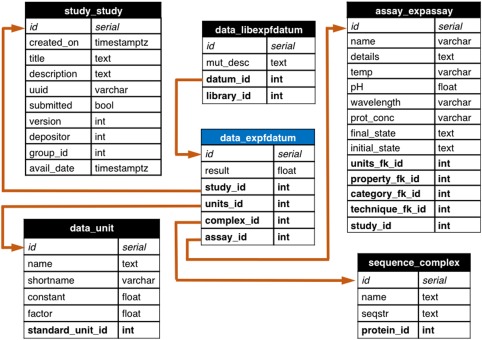Figure 2.

ProtaBank database schema showing the table for experimental data represented by a number (data_expfdatum, blue header) and all tables with foreign key relationships to it. Each table shows the field name (left) and the variable type for the field (right). Each datum in the data_expfdatum table has a foreign key relationship (orange arrow) to a study table (study_study) that organizes the context in which the experiments were performed, an assay table (assay_expassay) that describes the procedure used to obtain the measurement, a sequence table (sequence_complex) that holds the protein sequence of the mutant, and a units table (data_unit) that describes the units of the result. For data that is part of a mutant library, a foreign key links it to the library table (data_libexpfdatum). Analogous tables exist for data obtained from computations/simulations, derived data, and qualitative or range data. uuid, universally unique ID; avail_date, date study is available for public; seqstr, sequence string; temp, temperature; prot_conc, protein concentration; timestamptz, time stamp with time zone; varchar, variable character; bool, boolean; int, integer; float, floating point number; fk, foreign key.
